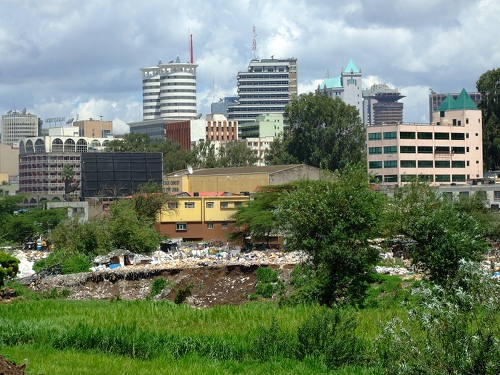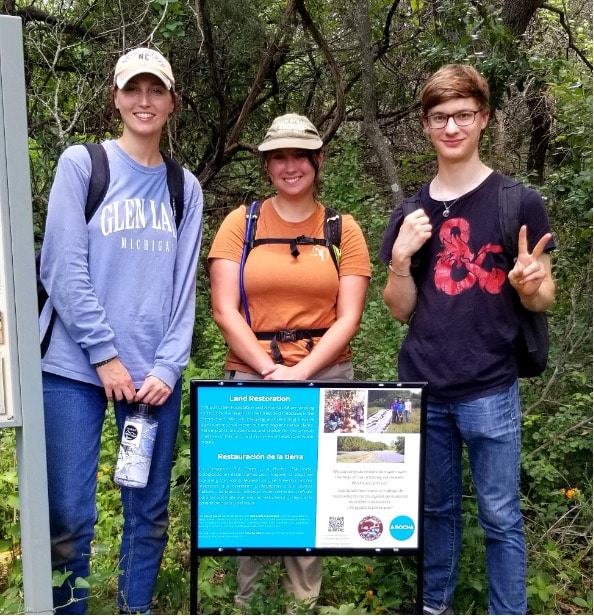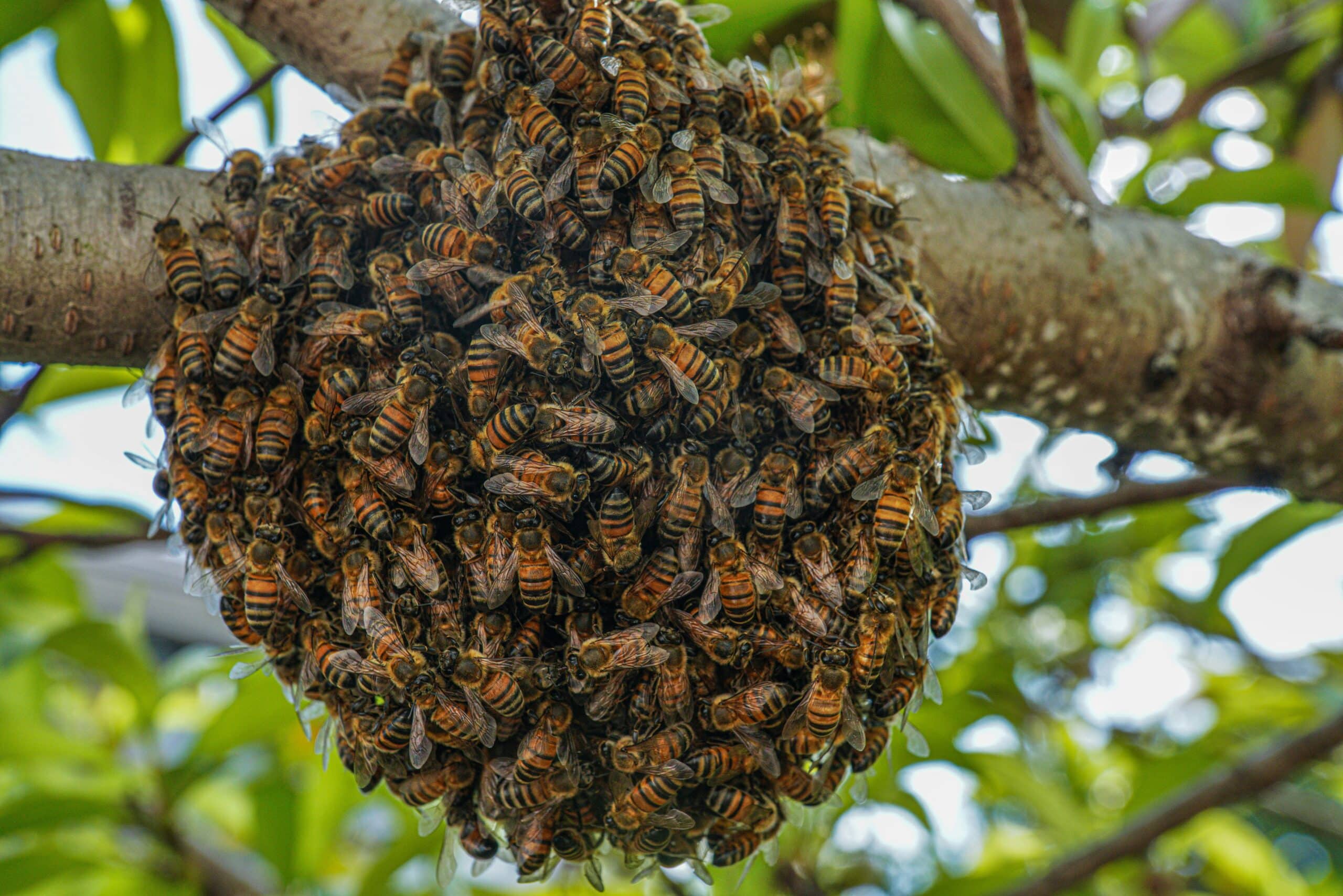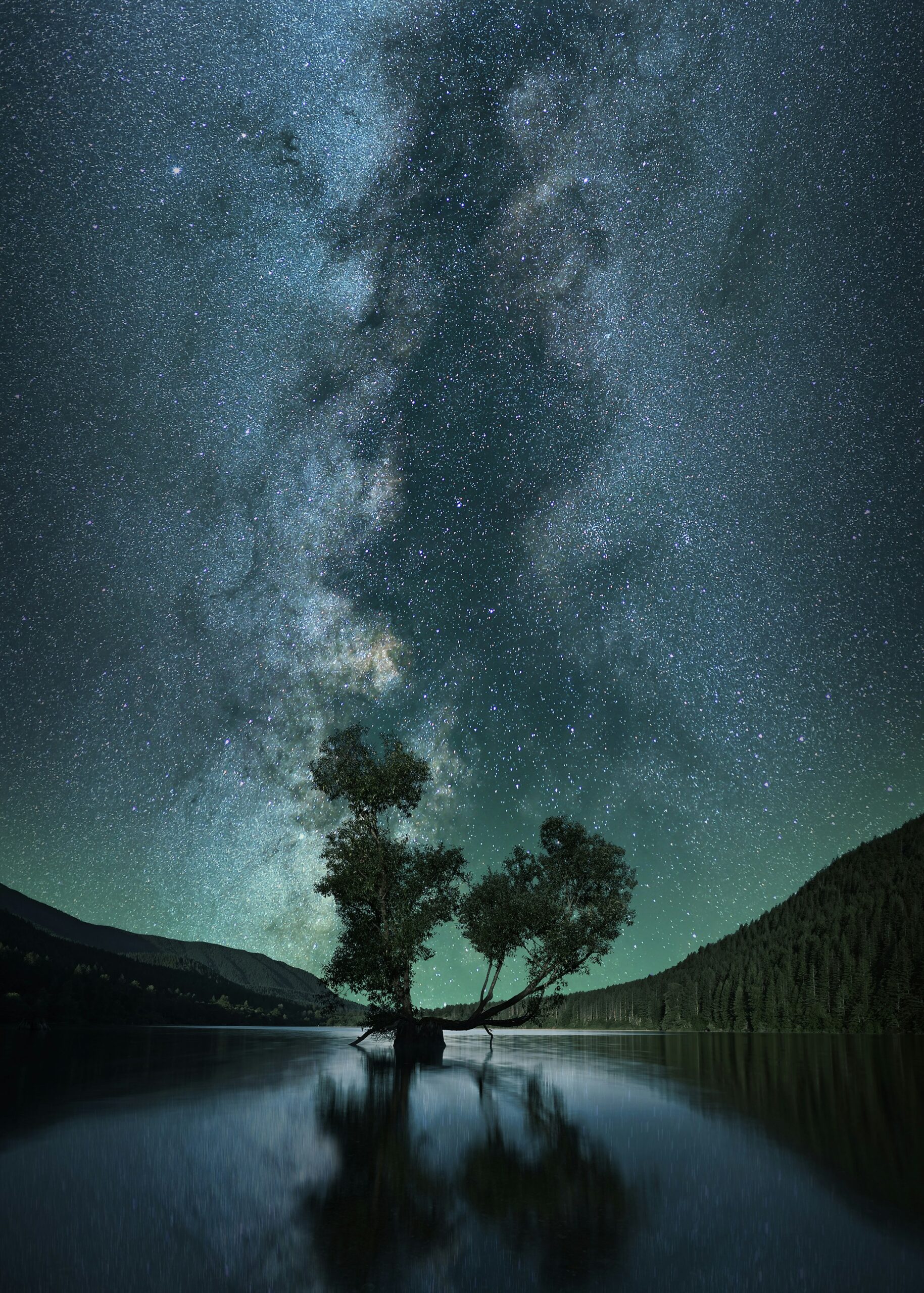Future Perfect: rural paradise or heavenly city?
Conservationists and wildlife enthusiasts often appear anti-urban. ‘Natural living’ seems to mean escaping from buildings, traffic and crowds. Those forced to find work in cities dream of escaping to a rural idyll … a little piece of heaven on earth.
Isn’t in strange, then, that the bible moves from a garden to a city, from Eden to the New Jerusalem, from a ‘natural paradise’ to streets and buildings? What are those who are committed to caring for creation to make of the fact that early Christianity was a deeply urban faith, spread from city to city along trade routes? Today’s Christianity also thrives most in cities – where, after all, more than 50% of human beings now live [1] − whilst churches often struggle in villages and scattered communities.

Nairobi skyline, by Dave Bookless
So how does God see cities, and how can we reconcile urban and rural as we seek to anticipate God’s future? As so often, the biblical picture is not simplistic. Gardens can be both places of intimacy with God and also of temptation, betrayal and sin (Eden and Gethsemane). Cities can be soulless Babel / Babylon demonstrating the futility of human achievements without God, and they can be the beautiful, shining New Jerusalem, full of light, water and good food.
I wrote this while travelling between Bangalore, Dubai, and London, three contrasting cities. Bangalore (officially renamed Bengaluru) was my childhood home and is now A Rocha India’s base [2]. Over 40 years I’ve seen a relaxed spacious city of 1.6 million [3], famous for its lakes and parks, explode into a hectic, hi-tech, megacity of 10 million [4]. Today, Bangalore bursts with new people, buildings, traffic and ideas, and simultaneously devours green spaces, villages and natural resources. Stretched to bursting and often breaking point, Bangaloreans talk of their journey ‘from the garden city to the garbage city’.
Dubai has also grown exponentially. It’s a brassy, glassy testament to the power of human technology and money to transform nature, with its skyscrapers, artificial islands, conspicuous opulence, and global crossroads status: apparently Dubai’s Emirates Airline staff are fluent in over 130 languages. Yet Dubai’s shimmering exterior hides an underside of exploitation, and is built on a perilously fragile dependence on oil-fuelled power.
And then London: apparently the second most diverse city on earth (after New York) with over 300 languages [5]. ‘When a man is tired of London, he is tired of life’ said Samuel Johnson [6], and in my subjective experience, London simultaneously stimulates and exhausts its residents. It too contains billionaires’ playgrounds and leafy suburbs adjoining areas of endemic deprivation, disease and despair.
None of these cities – Bangalore, Dubai or London – are templates for the heavenly city, but neither are they god-forsaken Babel. Rather, like Nineveh, they are troubled places to which God offers renewal and redemption, for people ‘and also many animals’ [7]. God’s future is neither a garden free of human footprint, nor a gleaming technopolis, but rather a garden city, a place where nature and culture combine, a place of beauty and sustainable resources (rivers and fruit-bearing trees), and above all a place where God is at home with his creation again. This gives us a practical vision for urban conservation: planting gardens, caring for wildlife, lobbying politicians, and engaging in careful planning for the well-being of all God’s creation in the heart of our cities.
Endnotes:
[3] www.cicred.org/Eng/Seminars/Details/Seminars/PDE2007/Papers/IYER_Neelakantan_paperNairobi2007-project.pdf
[4] www.deccanherald.com/content/151550/lowest-sex-ratio-blore-population.html
[5] www.daynews.com/latest-news/2013/03/top-10-culturally-diverse-cities-in-the-world-15031
[6] www.samueljohnson.com/tiredlon.html
[7] Jonah 4:11
We are happy for our blogs to be used by third parties on condition that the author is cited and A Rocha International, arocha.org, is credited as the original source. We would be grateful if you could let us know if you have used our material, by emailing [email protected].




Thanks, Dave, for another thoughtful, balanced and helpful article. Keep them coming!
John
I appreciate the vision of a future God’s Kingdom set out in your last paragraph. The point is that God’s kingdom is about people living in harmony with each other , that is, in total community. Acts 4:32-35 expresses perfectly the care and love the members of the first church had for each other and those around them. If that could extend to thousands or even millions living together that would be a truly great day and a truly great city. As you rightly point out, that harmony must extend (though at a differnet level) to harmony will all of God’s creation as a part of God’s overall plan.
Of course, those living in cities (sorry, but i am unashamedly rural) are dependent on the surrounding land for food and other resources, so the “New Jerusalem” foretold in Revelation 21 must include the surrounding countryside as well, indeed, the whole world.
Dave, I used to believe that Revelation 21 showed a view of heaven, but as I looked more carefully at the context, I discovered that the angel was showing John the church in her glorified state.
The angel told John that he would show him the bride, the wife of the Lamb, which we know to be the church (Eph 5.22–33, et al.), and then the angel showed John, “the great city, the holy Jerusalem, descending out of heaven from God” (Rev 21.10). See the holy Jerusalem descending out of heaven. Hebrews 12.22–24 goes right along with this imagery.
I think what we have, therefore, is simply another figure to represent the church. Sometimes she is compared to a wife, sometimes to a kingdom, sometimes to a building, and sometimes to a city, Jerusalem in particular.
Also, the imagery of a garden is picked up again in Revelation 22.
Helpful comments all round! Don, I agree about the New Jerusalem primarily being the church (the reference to it as ‘bride’ in Revelation 21.2 links to other NT refs), yet it is also within the wider context of a new / renewed heaven and earth (21.1). What we have, including the wonderful references in Revelation 22 back to Genesis 1-2 and the first garden (tree of life, rivers flowing etc), is the renewal of all things in Christ (nature and culture, world and church). What I also love is that there is no rigid rural / urban separation here, but rivers and fruit-trees in the heart of the city. Our work today in conservation must resist trying to re-create Eden, but rather be inspired by a vision where human creativity and technology works in harmony with God’s creation. We need to discern how to build with materials that will last to eternity (see 1 Corinthians 3.10-15) not simply disposable, polluting materials …